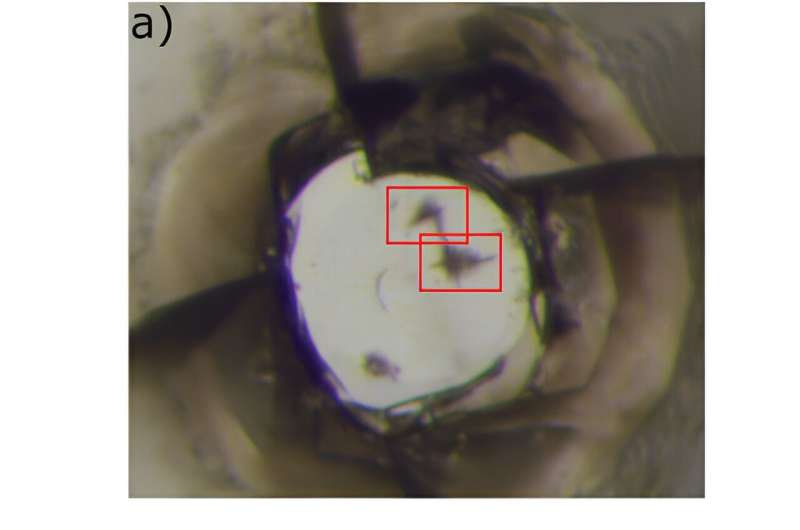This article has been reviewed according to Science X's editorial process and policies. Editors have highlighted the following attributes while ensuring the content's credibility:
fact-checked
peer-reviewed publication
trusted source
proofread
Newly created ultra-hard material rivals diamond

Scientists have solved a decades-long puzzle and unveiled a near unbreakable substance that could rival diamond as the hardest material on Earth. The research is published in the journal Advanced Materials.
Researchers found that when carbon and nitrogen precursors were subjected to extreme heat and pressure, the resulting materials—known as carbon nitrides—were tougher than cubic boron nitride, the second hardest material after diamond.
The breakthrough opens doors for multifunctional materials to be used for industrial purposes including protective coatings for cars and spaceships, high-endurance cutting tools, solar panels and photodetectors, experts say.
Materials researchers have attempted to unlock the potential of carbon nitrides since the 1980s, when scientists first noticed their exceptional properties, including high resistance to heat.
Yet after more than three decades of research and multiple attempts to synthesize them, no credible results were reported.
Now, an international team of scientists—led by researchers from the Center for Science at Extreme Conditions at the University of Edinburgh and experts from the University of Bayreuth, Germany and the University of Linköping, Sweden—have finally achieved a breakthrough.
The team subjected various forms of carbon nitrogen precursors to pressures of between 70 and 135 gigapascals—around 1 million times our atmospheric pressure—while heating it to temperatures of more than 1,500°C.
To identify the atomic arrangement of the compounds under these conditions, the samples were illuminated by an intense X-ray beam at three particle accelerators—the European Synchrotron Research Facility in France, the Deutsches Elektronen-Synchrotron in Germany and the Advanced Photon Source based in the United States.
Researchers discovered that three carbon nitride compounds were found to have the necessary building blocks for super-hardness.
Remarkably, all three compounds retained their diamond-like qualities when they returned to ambient pressure and temperature conditions.
Further calculations and experiments suggest the new materials contain additional properties including photoluminescence and high energy density, where a large amount of energy can be stored in a small amount of mass.
Researchers say the potential applications of these ultra-incompressible carbon nitrides is vast, potentially positioning them as ultimate engineering materials to rival diamonds.
"Upon the discovery of the first of these new carbon nitride materials, we were incredulous to have produced materials researchers have been dreaming of for the last three decades. These materials provide strong incentive to bridge the gap between high pressure materials synthesis and industrial applications," says Dr. Dominique Laniel.
"These materials are not only outstanding in their multi-functionality, but show that technologically relevant phases can be recovered from a synthesis pressure equivalent to the conditions found thousands of kilometers in the Earth's interior. We strongly believe this collaborative research will open up new possibilities for the field," says Dr. Florian Trybel.
More information: Dominique Laniel et al, Synthesis of Ultra‐Incompressible and Recoverable Carbon Nitrides Featuring CN4 Tetrahedra, Advanced Materials (2023). DOI: 10.1002/adma.202308030
Journal information: Advanced Materials
Provided by University of Edinburgh





















